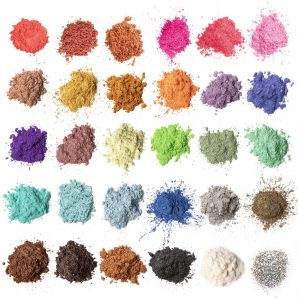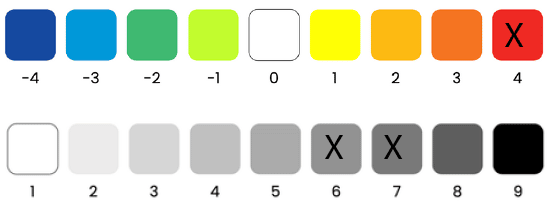Organic pigments for permanent make-up
What are permanent make-up pigments
When we talk about organic or inorganic pigments for permanent make-up, we are referring to the raw material used in the production of inks. In fact pigments are very fine powders, we measure them in microns, almost or not at all soluble in water. For this reason, they need to be dispersed in other substances, often oils, which help them to fix.
As it is easy to understand, in the creation of a good color the starting raw material is fundamental. Infact, the raw material must be pure, clean, without contamination to guarantee an excellent result. This is why there are various price categories for raw materials which reflect different prices for dyes.
Organic pigments for permanent make-up or inorganic ones are better?
In the world of permanent make-up, one of the most controversial and discussed topics is the choice and use of pigments by the dermopigmentist professional. The first big dilemma is the choice between Inorganic Pigments and Organic Pigments. In effect, there are doubts about the risks associated with their use, their quality and stability. The topic is extremely important because the colors used form the basis for the success of the treatment itself, avoiding allergic reactions or color changes of any kind.
Organic, natural or synthetic pigments
When it comes to organic pigments for permanent make-up, it is important to underline the division between natural and synthetic.
Natural organic pigments are of animal or vegetable origin, but unlike what people believe, their use is less safe precisely because of their origin: their components more frequently cause allergic reactions.
Their natural origin, therefore not “manipulated” and stabilized, makes them less stable and lasting over time. However, these pigments have a composition which generally makes them very bright. In addition, the powders of natural origin are very expensive and require longer processing, such as the association with “binding agents”, which modify their insoluble nature, to make them stable to light and more durable over time.
The synthetic organic pigments, on the other hand, are synthetic chemical compounds, as the word itself implies, deriving from the processing of petroleum or its derivatives.
The molecules are assembled and modified through an industrial chemical process and are
widely used in the pharmaceutical sector. The result is a hypoallergenic product, able to guarantee excellent results in terms of color brilliance and stability over time.
The possible presence of polycyclic aromatic hydrocarbons and amines make them
particularly sensitive in use, but to date, the manufacturing processes are capable of almost totally eliminating them.
Inorganic or mineral pigments
We find inorganic pigments, used since ancient times, in rocks and minerals. They include in their composition oxides (such as iron and chromium), salts and silicates. One of the most common heavy metals is Nikel, which is unfortunately responsible for the most common allergic reactions. For this reason, this pigment has reached such levels of purity that the heavy metal residue is almost non-existent. This results in a very low probability of adverse reactions.
This is why, the risk is “minimized”, leaving this type of pigment under the focus only of most skepticals. In recent years there has been the emergence of a “hybrid” category of pigment between the inorganic and the organic that exploits the positive aspects of each, minimizing the risks.
It is fair to point out that on a theoretical level all types of pigments are critical in use. However, the Resap (2008) and the current EU Regulation 2020/2081 strictly define the maximum limits of all “dangerous” components. Finally, the continuous sweeping checks by the competent authorities guarantee its application. Thanks to the innovative processes developed in recent years, the certified producers ensure safe and stable blends.
The most important final consideration is that strict laws and many controls are protecting the consumers. Moreover the quantity of organic or inorganic pigments for permanent make-up used is really minimal. For this, any skepticism should be superfluous. For sure, it is absolutely preferable to choose certified European producers who guarantee compliance with all production regulations.






